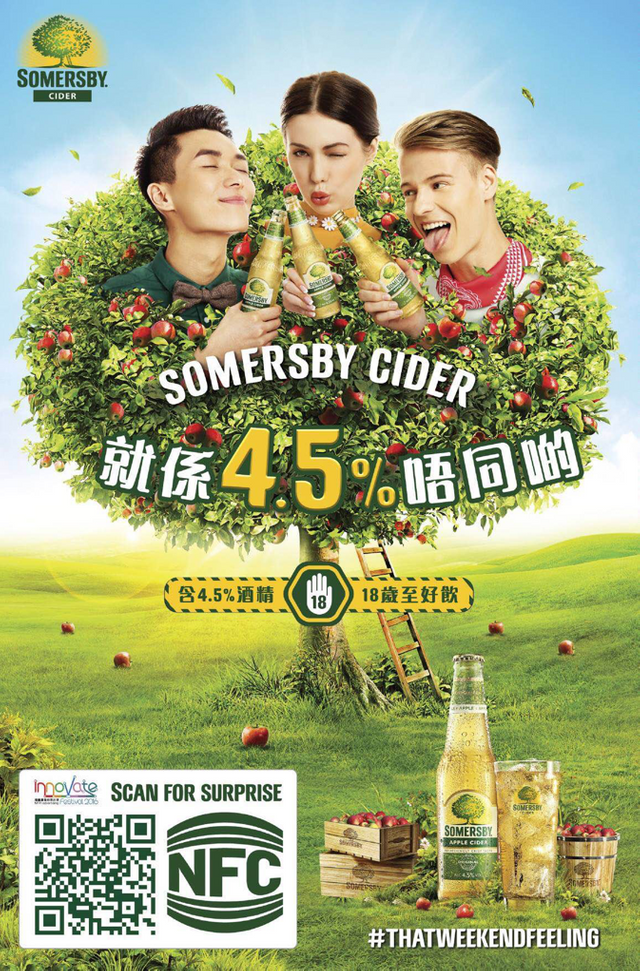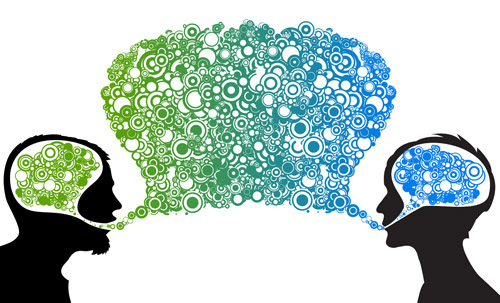Do we only communicate through words? NO. You should know how IMAGES perform, and how they communicate with you.
Hi my dear Steemit friends
Long time no see! How are you? Hope you're doing great ❤️ Today I'd like to share something related to communication. Here at Steemit, we communicate everyday. However, most of the communication are done by words. Actually, you might be communicating with someone in a way you didn't realized before, and you might have been affected, or even fooled in a way people won't tell you how. This communication is made possible through IMAGES, in a simple, yet complicated way.
The notion of multimodality challenges the central role often played by language in communication by suggesting that communication can be done through numerous representational modes such as image and posture. Words are considered powerful because they can not only state things, but also do things. Austin (1962) showed that some linguistic utterances are performative. Like the sentence “I object to your proposal”, it performs the action of objecting. However, performatives will not be successful without felicity conditions such as having appropriate people and procedures (Austin, 1962). By analyzing two images found on social media, I argue that images can also be peformative. Apart from showing something to the viewers, they can also “do” things, such as demanding the viewers’ action towards the issue presented. These actions, too, can succeed only with the fulfillment of felicity conditions.

Fig. 1 An Advertisement of Somersby Cider (Somersby HK, 2017)
Words in picture: 4.5% makes a difference; 4.5% alcohol, can only drink when you are 18
Figure 1 is a conceptual picture showing symbolic suggestive process as the most salient process. With a grassland as the setting, the main represented participants are three people with Ciders, Ciders and an apple tree. The picture creates an ethereal yet refreshing atmosphere. The white light around the tree makes the Cider celestial, establishing its identity as elegant whilst the glowing sunlight makes it look fresh.
Although there is a blur of detail, the fancy atmosphere is also made by the image’s high sensory modality. The apple tree has high sharpness with every leaf being clearly seen. Apart from the articulation of detail, the articulation of color also affects expected levels of sensory characteristics (Spence, 2015). First, the relatively high saturation value of the shiny leaves, grasses and apples make the Cider more glamorous. Next, the apples are presented with high contrast value to appear sweeter, as vivid colors are more likely to arouse stronger flavors than pale colors (Wei, Ou, Luo, & Hutchings, 2012). Francis (1995) found out that if a reddish food is placed under a warm lighting, it will appear “startlingly red and very attractive” (p.151), thus appears to have higher quality. By doing so, the advertisement producer highlights the freshness of the apples, therefore the Cider’s pleasant taste. Also seeing the words “4.5% makes a difference”, the viewer seems to have entered a wonderland with intense sensory experience. So, the image does not only state that “Somersby Cider is amazing”. Together with the symbolic meaning of apple as temptation from the story of Genesis, it also makes great efforts in performing the action of tempting the viewer into buying the Cider. It shows this image’s performativite for the first time.
Its performativity can also be seen in the narrative processes. Instead of intending to show the event of three people having climbed up to the tree to enjoy the Cider, the producer aims more at attracting the viewers by various means. The woman shows a non-transactional action process in which she is the actor, her hand is the vector and the Cider is a tool to address an unseen participant. Though the goal is absent, it is obvious that she is inviting the viewer to clink glasses. Although she seems to be far away from the viewer, she tries to establish an imaginary relationship with the viewer by looking at the latter. By winking and pouting, she tries to seduce the viewer. So, the viewer is asked to desire her (Kress & van Leeuwen, 2006). Here, the “demand” picture performs an action: luring the viewer into buying the Cider so as to “join her”.
While the woman makes a “demand”, the men make “offers”. They are objects of contemplation (Kress & van Leeuwen, 2006). The man on the right shows a transactional action process, inviting the other man to clink glasses. Here, he is the actor, his hand is the visible vector and eyelines the invisible vector. He puts out his tongue, suggesting that the Cider is tasty. The man on the left raises his jaw, closes his eyes and smiles, suggesting that the Cider is fragrant. They tell the viewer: the Cider is gorgeous. However, they do not stop at making statements. Their ultimate aim is to perform: urging the viewer to buy the Cider. They do better performance than using caption like “Please buy Somersby Cider because it smells and tastes good!”, because the men have ‘proved’ the statement. This image’s performativity shows that image as a semiotic resource may not need the aid of linguistics means to convey messages and perform actions. They can even be more convincing if used properly.
As convincing as the represented participants’ performantives are, their actions would succeed only with felicity conditions fulfilled. First, the viewer is convinced by their illustration. Second, the viewer is an adult. Anyone above the age of 13 (the age restriction of applying a Facebook account) can potentially see this picture, but those under 18 are excluded from the target audience. Interestingly, while the symbol showing a hand with “18” on it states that there is an age restriction, it also performs to stop the underage from buying the Cider. Of course, this performative has its own felicity conditions, such as the viewer is self-disciplinary. Special for the woman’s invitation, a major condition is that the viewer is a male, since people are more likely to be attracted by the opposite sex. Obviously, the author uploaded this picture to attract costumers by making the Cider appear amazing and trying to establish imaginary relationship between a represented participant and the viewers.

Fig. 2 Volunteer Liz Clegg and a young man in the Calais refugee camp (The Guardian, 2017)
Figure 2 is an image found on the Facebook page of The Guardian when they shared one of their articles. The article itself is performative: urges the British government to keep their promise of giving a sanctuary to lone child in the Calais refugee camp and arouses readers’ awareness towards this issue.
It is a narrative picture showing bidirectional transactional action. The boy and the woman are staying very close to each other with both as actors and goals. Vectors are formed by the left arm and hand of the boy holding the woman, as well as the body of the woman tilted towards the boy. They are the represented participants whose identities are roughly revealed in the caption. In this sense, the linguistics text acts as an anchorage to elaborate the picture. The picture was taken in the refugee camp, with crude wooden dwellings and some daily necessities shown in the setting. In terms of naturalistic modality, this picture is real. It is very similar to what we can see with the naked eye (Kress & van Leeuwen, 2006). The choice of modality is justified since news photographs are expected to reflect the reality to appear reliable.
The use of frontal angle decides the viewer’s involvement with the two people. This is further suggested by the use of “young man” instead of “refugee” in the caption. Moreover, they and the viewer are suggested as having a close social distance by using medium shot as the size of frame. This distance is common for those who are in a casual social gathering (Hall, 1966). However, the boy’s gaze shows that he demands a serious relationship instead of a relaxing one. Staring at the viewer without much facial expression, he performs an action of urging the viewer to pay more attention to the issue of alone child refugee and, if possible, give a helping hand. To understand more on what he demands, it is important to look at the analytical process involved. As a carrier, the boy’s possessive attributes are his skin, hair and eye color as well as clothing. The pattern on his shirt forms the flag of Afghanistan. These possessive attributes suggest his identity as an Arabic Afghanistani. Viewers may soon speculate that he became a refugee because of war. Few may notice the black-green-red-colored swallow at the top right hand corner of the image. Its color again suggests the boy’s nationality. Swallow, having helped to deter enemies in the holy city of Mecca, symbolizes faith and steadiness in Islamic countries (Tresidder, 2000). More generally, swallow symbolizes hope and freedom. Considering these, the young man probably wants the viewer to know his love towards, therefore the hope for peace in Afghanistan. Thus, the images’s second performative should be asking the viewer to be concerned about the unstable political situation in Afghanistan.
Again, these performatives would not succeed without the fulfillment of felicity conditions. One major felicity condition is that the viewer is moved by the performative. While the first performative is relatively easy to understand, whether the second performative can succeed depends on the viewer’s knowledge and cultural training. If the viewer lacks knowledge on Afghanistan flag or the symbolic meanings of swallow, he/she would not even perceive this performative. This entails to its failure. This may be considered as a limitation of using image alone to perform without integration with linguistics means.
The woman next to him makes an “offer”. She is also involved in a non-transactional action process in which she is the actor, and her arm and hand are the vectors. She seems to be talking to someone outside the image. She offers the information that she feels comfortable and safe with the boy, and can look away from him without concern even he has come to a personal distance with her in which he could attack her easily. This shows their friendly relationship and makes a performative to destroy the common myth of Arabic being hostile and aggressive.
The author uploaded this image firstly to visually attract people to read their article. Next, by describing the event happened mainly in language and showing the relationship of the represented participants as well as constructing relationship between they and the viewers by this image, he hoped the viewers to act towards the issue.
These two pictures found on Facebook were uploaded with purposes. While the former demands INTEREST AND MONEY, the latter demands ATTENTION AND HELP. They may, optionally, interact and integrate with language to convey messages and more importantly, do performatives. Various conditions decide whether viewers would accept or reject their performatives. Nonetheless, both pictures prove that image as a semiotic resource can make use of an array of semiotic modes like color, gaze, and gesture to make meanings. Therefore, the power of image in communication should not be underestimated and it should not be considered inferior to language in communication.
Hope you enjoy reading it :):) Please feel free to comment in the comment section and let us know what you think about the performativity of images!
References
Austin, J. L. (1962). How To Do Things With Words. Oxford: Oxford University Press.
Francis, F.J. (1995). Quality as Influenced by Color. Food Quality and Preference, 6(3), 149-155.
Hall, E.T. (1973). The Hidden Dimension. New York: Doubleday.
Kress, G., & van Leeuwen, T. (2006). Reading Images: The Grammar of Visual Design (2nd ed.). London and New York: Routledge.
Somersby HK. (2017). https://www.facebook.com/SomersbyHk/?fref=ts
Spence, C. (2015). On the Psychological Impact of Food Color. Flavor, 4(1), 21-36.
The Guardian. (2017). https://www.facebook.com/theguardian/?fref=ts
Tresidder, J. (2000). Symbols and their meanings. New York: Sterling Publishing
Company.
Wei, S.T., Ou, L.C., Luo, M.R., & Hutchings, J.B. (2012). Optimization of Food Expectations Using Product Color and Appearance. Food Quality and Preference, 23(1), 489-62.


Well done, re-steemed, very interesting, thank you for including the research.
Thanks a lot:) I'm glad for your support!
Nice post 😄
Thankssss O brother 😌😌 hehehe 😏
Communicate preferably face to face, but if circumstances are not possible, it is not wrong we communicate through writing or audio
Yup that's true :) Still, we spend much time on the media, and may easily be affected by the stuff on it.
Because as famously said " A picture tells a thousand words". And we always think it's time saving to see a picture, then read thousand words. So yes! Symbols can speak louder than words.
Yes that's true :) And I think images may become more and more important in conveying messages in the future.
Of course not. I some post without image and have words only usually not as upvoted as the ones with image. So, visuals do matter
Yes that's soo true :):) Thanks for commenting!
#life
Mark Twain:Twenty years from now you will be more disappointed by the things that you didn’t do than by the ones you did do, so throw off the bowlines, sail away from safe harbor, catch the trade winds in your sails. Explore, Dream, Discover.Nice word
Thanks a lot :)
This post has been ranked within the top 80 most undervalued posts in the second half of Nov 07. We estimate that this post is undervalued by $7.33 as compared to a scenario in which every voter had an equal say.
See the full rankings and details in The Daily Tribune: Nov 07 - Part II. You can also read about some of our methodology, data analysis and technical details in our initial post.
If you are the author and would prefer not to receive these comments, simply reply "Stop" to this comment.